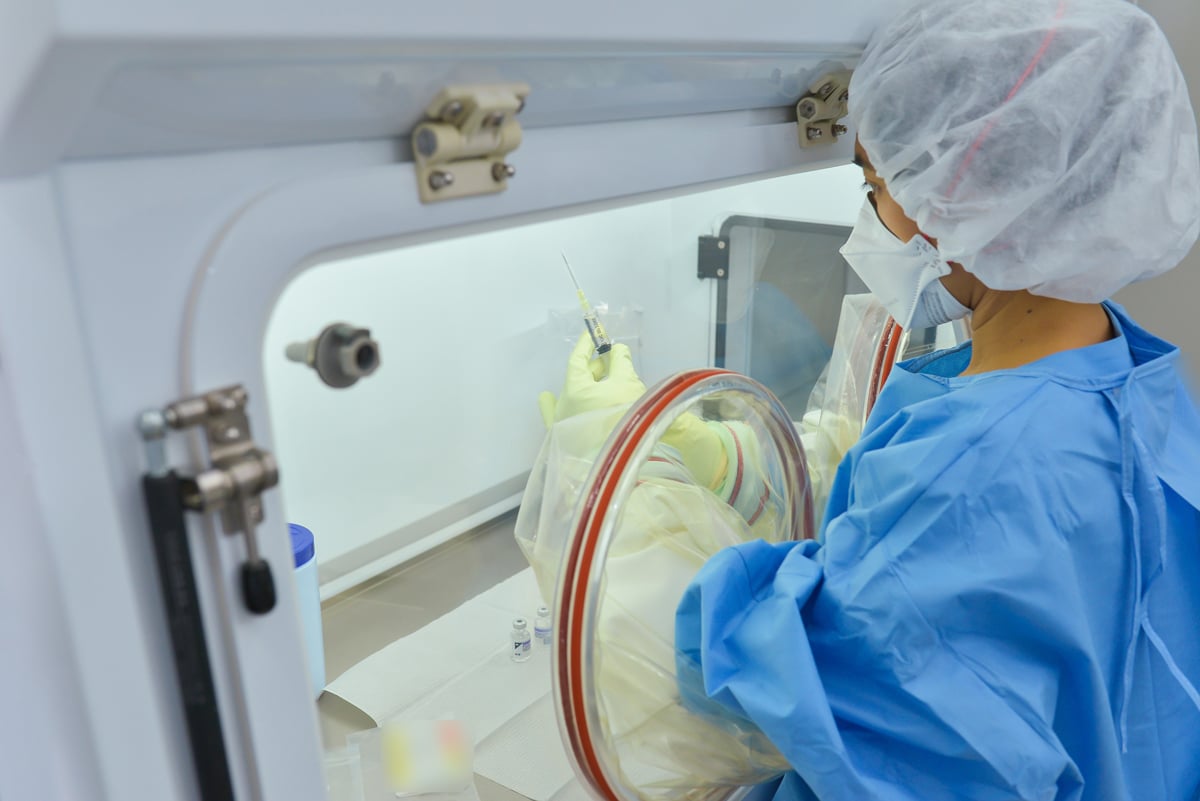“It’s common for patients to be psychologically affected upon learning that they have cancer. Cancer patients require special care, both physically and mentally. When these patients make the decision to seek treatment at Bumrungrad Hospital, us pharmacists have to really dig into our knowledge and tune into the needs of the patients. We have to turn obstacles into smiles somehow, because good morale is just as important as good pharmacology. We are honoured to do this.” Nirachorn Kuchonthara explains the attitude and care that she puts into her role as Senior Manager of Pharmaceutical Admixture & Compounding Services at the Horizon Regional Cancer Center.
More than just pharmacology
The main duty of a pharmacist at the Horizon Regional Cancer Center is to prepare and dispense medication according to the specific regimen of each individual cancer patient.
“The medications include some hazardous substances, which needed to be prepared in an aseptic and controlled environment by highly skilled and specially trained pharmacists. We handle not only chemotherapy and immunotherapy preparations but also other injections as needed.” Nirachorn explains the process.
“Generally, it will take no less than two weeks after the initial diagnosis until it is our turn to take care of the patients. They often start with specialists in certain body systems, such as the pulmonologist, hepatologist, gastroenterologist, or gynaecologist. Once it has been confirmed that the patient has cancer, they will be sent to an oncologist for a more detailed diagnosis. After the exact stage and characteristics of the cancer has been determined, the various treatment options will be evaluated. The patient and the physician will enter into a discussion about what the most suitable medications for the patients will be”.

Full and mutual agreement between the physician, the patient and their family is absolutely crucial in determining the treatment regimen. This is because there are many standard cancer treatment regimens available, each with its own response rate and side effects, depending on the characteristics of the cancer and the status of the patients. The physician will ensure that the patient fully understands the pros and cons of each regimen. It is very important that the patient responds well to the medication while experiencing the least possible side effects during treatment. “Once the decision has been made by the patient and the physician, the pharmacist may be called upon to explain the particulars of the chosen regimen to the patient. The exact amounts, dosage, number of cycles, side effects, relevant statistics and other need-to-know information, will be explained to the patient by the pharmacist. We also take into consideration how patient’s diet and dietary supplements might interact with the medicines and affect the treatment.”
Once the decision has been made and the medications has been prescribed, the pharmacist’s work is to double check to ensure that the dosage regimen is correct and the intravenous fluids prescribed is compatible with the active compounds, before preparing the infusion or injection. In cases of rarely used or under-stock items, the pharmacist will liaise with the procurement and inventory team to ensure that the medications are available and ready for the patient to commence treatment.

“
We don’t just check against the prescription. We also confirm the exact safety profile of the drug and the current health status of each individual patient, right down to their white and red blood cell count, their kidney and liver functions. If we see the need to adjust the medications, the oncologist will be notified immediately. Only when they have given us the go-ahead will we begin to prep the medication for administration.” Nirachorn details the highly exacting duties of a pharmacist.
More than just dispensing
Side effects are a major consideration of any cancer treatment, and can vary greatly. When a patient starts a new regimen, enters a new cycle or has an add-on therapy, the pharmacists have to update the patient accordingly. “There are among us, pharmacists who are particularly adept at explaining the finer points of the medication to patients. For international patients who do not understand Thai, we coordinate with medical interpreters to ensure that no critical detail or nuance is lost in translation
. For some patients, the input of a nutritionist is also required to build-up the patient’s strength, in order to withstand the effects of the much-needed medication. If the patient’s body is unready for the medication, more harm than good will be done.”
“Some patients have trouble sleeping because the corticosteroids prescribed to combat nausea can cause difficulties in falling asleep.
Sleep is crucial for cancer patients, because blood cells are produced primarily between midnight and 4am. If a patient is unable to sleep during those hours, they will not be able to receive their medication. That is why we always ask whether patients are able to sleep at night. If necessary, sleeping pills might be suggested. We pay attention to every detail because we care.”
Nirachorn’s 15 years of experience has made her a font of expertise and earned her the trust of her colleagues and patients alike in all matters concerning cancer medication. Her leadership instills the Pharmaceutical Admixture & Compounding Services team at the Horizon Regional Cancer Center with a deeply ingrained sense of duty and care towards the ultimate wellbeing of cancer patients. She constantly strives to educate her team members and develop their skills, and inspires them to always put the immediate and long-term needs of the patient first even if it means working longer than usual.
Nirachorn leaves a parting shot to remind us all of why they do their work.
“All of us in the team know that patients have a limited window of opportunity, and that they are constantly living with and battling the cancer in their bodies while under our care. We empathize with them. That is why we’re being painstakingly careful and going the extra mile as we go about our work. We’re rooting for the patient to get better, so they can get back to living their best lives.”
For more information please contact:
Last modify: September 01, 2023